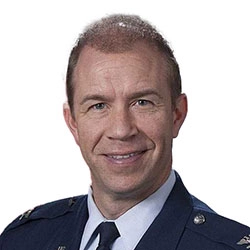 They’re fun to fly and responsible for some amazing aerial images, but drones aren’t all fun and games. In fact, they can present a real risk to aircraft when their owners don’t follow the law.
They’re fun to fly and responsible for some amazing aerial images, but drones aren’t all fun and games. In fact, they can present a real risk to aircraft when their owners don’t follow the law.
Here’s what you need to know about the risks drones pose to aircraft and the laws in place to protect pilots and their passengers.
Who’s Flying Drones?
Drones fall under the category of “unmanned aircraft” because they don’t have a pilot flying them. There are several reasons to use drones, including:
- Military operations
- Movie production and filming
- Recreational users just having fun with new technology
- Photographers getting aerial images for a variety of purposes
- Security at large events, such as concerts and sporting events
Many different people are using drones for various reasons, ranging from hobbyists to professionals, and they don’t all recognize or even know about the threats these unmanned aircraft pose to manned aircraft.
The Risks of Unmanned Aircraft
Drones can pose a threat to manned aircraft when they’re flown at too high of an elevation and in a flight path. The Federal Aviation Administration (FAA) found that drones cause more structural damage than birds when they collide with an airplane.
As a result, most drones now need to be registered with the Federal Aviation Administration (FAA). Drones that weigh .55 pounds or less and are exclusively flown under the Exception for Recreational Flyers are the only ones that don’t need to be registered. Drones that weigh more than .55 pounds and are flown recreationally still need to register for the Exception for Recreational Flyers.
Currently, 856,158 drones are registered with the FAA. Most of them (527,174) are registered for recreational purposes. Unlike commercial pilots, recreational pilots don’t need to take a test to fly their drone. Currently, 259,207 remote pilots are certified.
There has been some confusion about who needs to register for recreational versus commercial use. Pilots who plan to make money from drone videos by posting them on YouTube or elsewhere need to register for FAA Part 107, commercial registration.
It’s only $5 and can save a lot of headaches in the future. However, it does require taking a certification exam to ensure that the commercial drone pilot understands all the rules in place that are designed to protect manned aircraft.
What Laws are in Place for Drone Pilots?
Hobbyists and commercial drone pilots alike need to follow several laws to keep airplanes, pilots, and passengers safe.
All drones need to be flown at under 400 feet. In addition, there are several specific places that you can’t fly a drone over without getting a special permit:
- Prisons
- Stadiums
- Military bases
- National parks
- Moving vehicles
- Stadiums and racetracks with ongoing events
- Anywhere that interferes with manned aircraft or emergency vehicles
It’s not surprising that people can’t fly drones over secure facilities like prisons and military bases. However, not being allowed to fly a drone in a national park can be disappointing for photographers who want to capture images of natural beauty, such as the Grand Canyon.
The steep penalties attached to breaking these laws are not worth the risk of getting that great shot. If caught, drone pilots can face fines up to $5000 and up to six months in jail.
Questions about Aviation Laws? Let’s Talk
If you have an aviation case and need an expert, we can help! Contact us to learn more about our aviation services and find an expert witness for your case.

